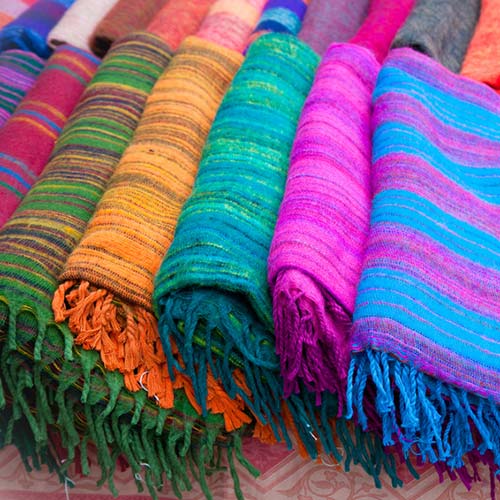As the weather starts to return to normal, in the Northeast at least, it’s time to snuggle under warm bedclothes. While it may or may not be true that the Eskimos have many words for snow, it is true that we English speakers have multiple words for bedclothes.
For example, you might have a “comforter” that may or may not be your “bedspread.” It may or may not be “quilted,” but it’s not a “quilt.” You might have a “duvet,” which might also be your “bedspread.” It’s probably “quilted,” though it’s not a “quilt,” either. It might even have its own cover, but it’s not a “coverlet.” You might use your “comforter” or “duvet” as a “blanket,” but you might also have a “blanket” in addition to your “comforter,” “duvet,” “quilt,” or “bedspread.” Perhaps you sleep just under a “coverlet,” or kick off the “covers” during the night.
Confused? It only gets worse. But it’s okay; this one’s just for fun.
The terms can be interchangeable, but they also have specific meanings. The truth is, there’s no (pun alert) blanket term for any type of bedclothes that everyone can agree to crawl under.
For example, a “quilt” is usually something pieced together from different fabrics, with the top layer being the most decorative. It has a middle layer of cotton batting or other “blanket” material and a bottom layer that usually makes the “quilt” reversible. It is “quilted” with lots of top stitches throughout, with the stitches themselves usually integrating with the fabric to form a pattern.
Yet that “quilting” is used in many other multilayered bedclothes as well, and you’ll see bedding advertised as “quilts” that have no top stitching at all, or are solid pieces of fabric.
Most of those quilt-less “quilts” are probably what many Americans would call “comforters,” which the New Oxford American Dictionary defines as “a warm quilt.”
But in British English, a “comforter” is a warm scarf or a baby’s pacifier, the latter of which they also call a “dummy.” The kind of “comforter” that we use to keep warm is considered a North American term, The Oxford English Dictionary says, for “a quilted coverlet.”
If the bedclothes are filled with down and intended to have a decorative outer cover, in the United States that’s usually called a “duvet,” though, of course, the term is French for, um, “down.” But in Australia, a “comforter” filled with down is called a “continental quilt,” regardless of whether it has a decorative cover.
A British soldier might wear a “duvet jacket,” one filled with down or some other lofty material that is “quilted.” We’d probably just call that a “down jacket.” And that soldier might request a “duvet day” to recover from stress. We might call that a “mental health day.”
Your “comforter,” “duvet,” or “quilt” might also act as your “bedspread,” or you may have a separate piece of decorative bedding that goes on top. Chances are, it’s “quilted” as well. Or you might call that a “coverlet,” which comes from the French words for “cover” and “bed.”
Most people think of a “blanket” as a thinner covering, woven or a single layer of fabric. It’s usually far more utilitarian than any of the others, and much less decorative.
Then there are “throws” and “afghans,” which are usually decorative afterthoughts, placed on top of any other bed covering or even on a sofa or chair. The “afghan” came into the bedding lexicon in 1850, the OED says, to mean “A blanket or wrap of knitted or crocheted wool, usually made in strips or squares.”
We hope you are comforted. That should cover it.
Merrill Perlman managed copy desks across the newsroom at the New York Times, where she worked for twenty-five years. Follow her on Twitter at @meperl.

